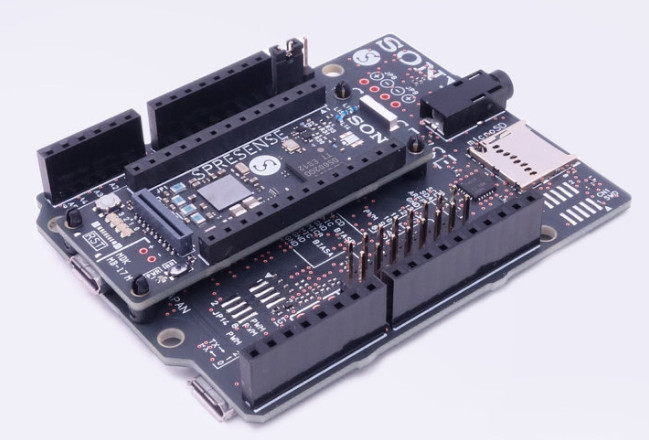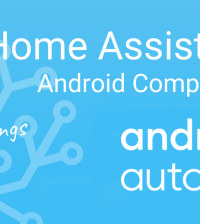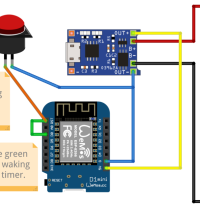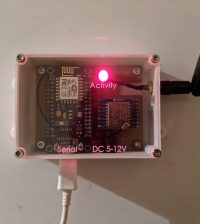- makeITcircular 2024 content launched – Part of Maker Faire Rome 2024Posted 2 weeks ago
- Application For Maker Faire Rome 2024: Deadline June 20thPosted 2 months ago
- Building a 3D Digital Clock with ArduinoPosted 7 months ago
- Creating a controller for Minecraft with realistic body movements using ArduinoPosted 7 months ago
- Snowflake with ArduinoPosted 8 months ago
- Holographic Christmas TreePosted 8 months ago
- Segstick: Build Your Own Self-Balancing Vehicle in Just 2 Days with ArduinoPosted 8 months ago
- ZSWatch: An Open-Source Smartwatch Project Based on the Zephyr Operating SystemPosted 9 months ago
- What is IoT and which devices to usePosted 9 months ago
- Maker Faire Rome Unveils Thrilling “Padel Smash Future” Pavilion for Sports EnthusiastsPosted 10 months ago
GPS, Glonass and Advanced Digital Audio Codec for the Sony Spresense
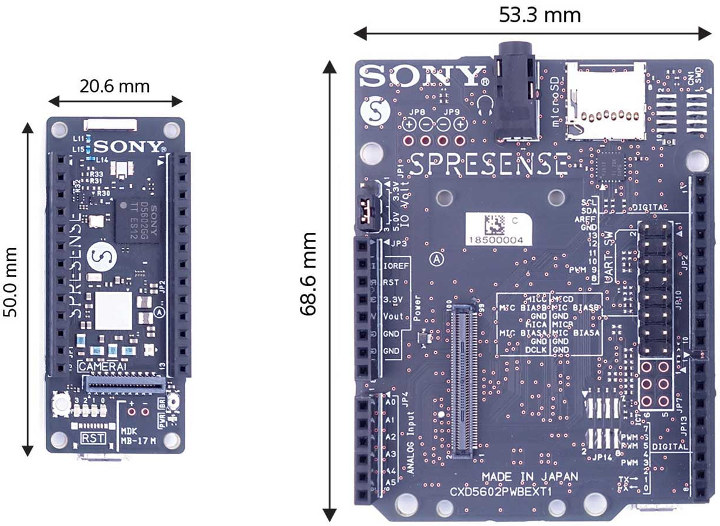
Sony recently renamed its “old” Sony Spritzer, an Arduino compatible with a Sony hexa-core Arm Cortex-M4F micro-controller, a built-in GNSS receiver, and an audio codec.
They made some design modifications and called the “new” board Spresense. Sony is ready to launch the main board for ~$50, and the extension board for an extra $32 on July 31, 2018.
Sony released the specification of the development board with Arduino Uno connectors and support in Arduino IDE. Software can be developed using the Arduino IDE or the Eclipse IDE, and the board allows for the development of systems for diverse applications, including drones, smart speakers, sensing cameras and other IoT devices.
Sony SPRESENSE main board:
- MCU – Sony CXD5602 ARM Cortex-M4F ×6 micro-controller clocked at up to 156 MHz with 1.5MB SRAM
- Storage – 8MB Flash Memory
- GNSS – GPS & GLONASS
- Audio – 3.5mm audio jack
- Expansion I/Os
- Digital I/O Pins – GPIO, SPI, I2C, UART, PWM, I2S
- Analog Pins – 2ch (0.7V range)
- Camera interface
- USB – 1x micro USB port for programming and power
- Power Supply – 5V via micro USB port
- Dimensions – 50 x 20.6 mm
Sony SPRESENSE expansion board:
- Storage – micro SD cardslot
- Audio input / output – 8ch digital microphone input or 4ch analog microphone input, 3.5mm headphone jack
- Arduino header
- Digital input / output – 3.3V or 5V digital I/O
- Analog terminal – 6ch (5.0V range)
- USB – 1x micro USB port underneath the board
- Dimensions – 68.6 mm x 53.3 mm
